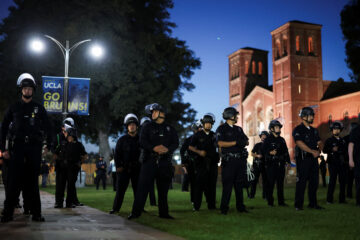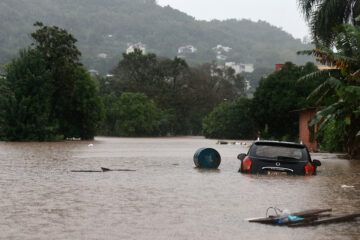Thousands of Nepalese pray for earthquake victims
Thousands of Nepalese dressed in white offered prayers and flowers at home and in temples Thursday in a Hindu ritual marking the end of a 13-day mourning period for those killed in the country\’s massive earthquake.
Families and friends also published condolence messages with photographs of victims in local newspapers.
The mourners gathered amid piles of stones, mud, bricks and wooden beams that once formed centuries-old temples, palaces and structures toppled in the April 25 quake, which killed more than 7,750 people. The main ceremony was held in the ruins of Kastamandap, a temple for which the capital, Kathmandu, was named.
"There are so many people and so many buildings we have all lost in the earthquake. I am here to show my support for these families and to say that we are all here for you," said Alok Shrestha, a banker holding a bouquet of marigolds.
During the customary mourning period, close family members stay at home, do not touch outsiders and refrain from eating salt. No entertainment is allowed.
Nearly 500 people gathered at Kathmandu\’s historic center, Basantapur Durbar Square, where temples were reduced to rubble, to offer prayers.
The central bank announced Thursday that people whose houses were damaged in the quake can obtain loans at a 2 percent interest rate. The average commercial loan rate is about 10 percent.
Nepal Rastra Bank official Min Bahadur Shrestha told state-run Radio Nepal that people in Kathmandu can receive loans of up to 2.5 million rupees ($25,000) and those outside the capital 1.5 million rupees ($15,000).
More than a thousand engineers are checking damaged houses in the capital and advising people about whether they are safe. It is still unclear how many houses were damaged and how many are repairable.
Bhimsen Das Shrestha, a lawmaker representing Kathmandu, said the government should introduce new rules to make buildings earthquake-resistant.
"When we rebuild the structures in Kathmandu, we need to consider new technologies in earthquake-prone areas," he said.
Also Thursday, a U.N. health official said there have been no epidemics in areas hit by the earthquake or in camps where homeless people are sheltered.
Some cases of diarrhea have been reported, but that is normal for this time of year, said Poonam Singh, the World Health Organization\’s deputy regional director for Southeast Asia.
She cautioned, however, that there could be problems during the monsoon season which begins next month.
The agency is sending medical treatment tents to 14 badly hit districts where health clinics were destroyed, she said.
SOURCE: AP
[do_widget_area inner_adsbar]








